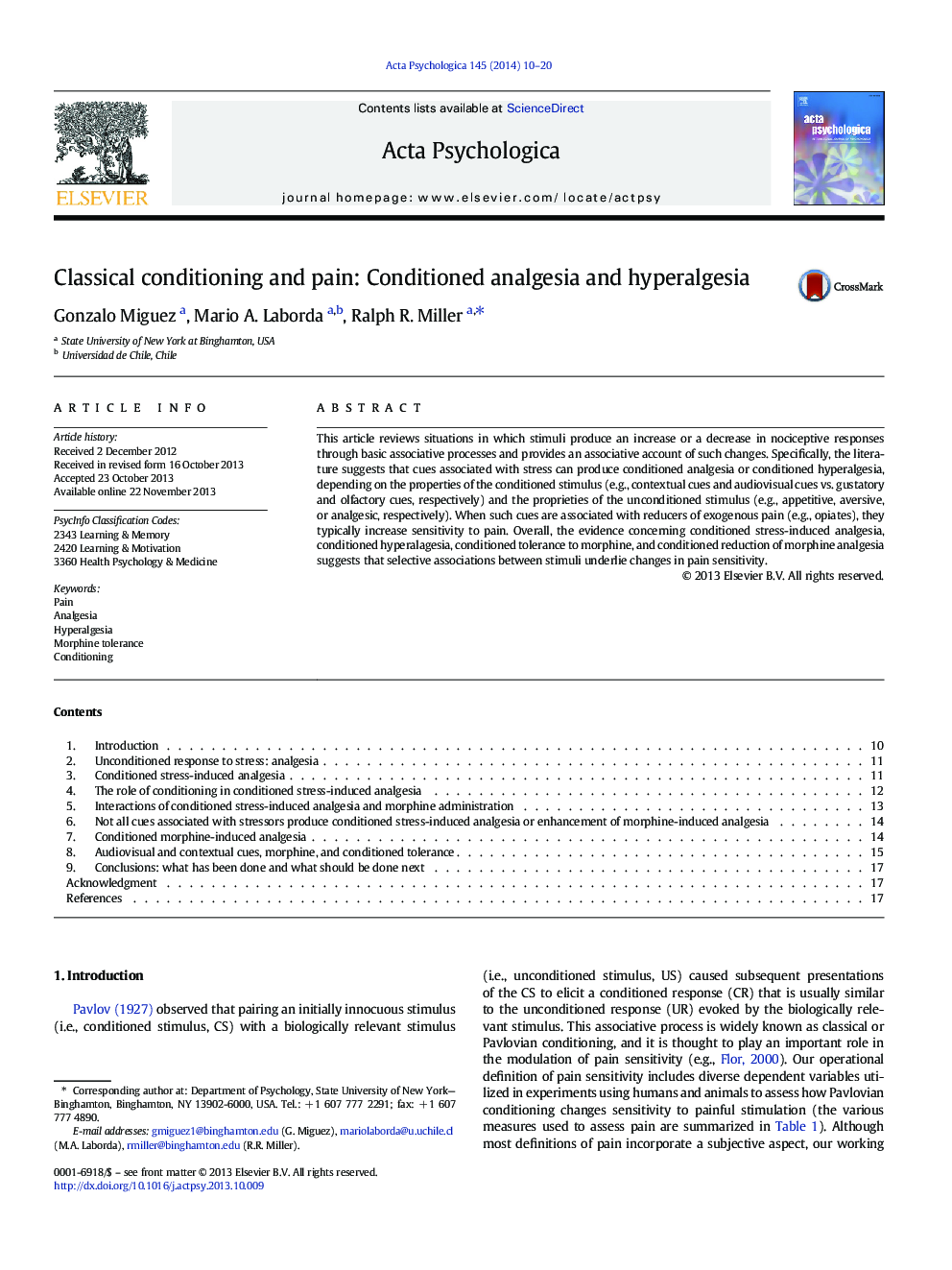| کد مقاله | کد نشریه | سال انتشار | مقاله انگلیسی | نسخه تمام متن |
|---|---|---|---|---|
| 919841 | 1473613 | 2014 | 11 صفحه PDF | دانلود رایگان |
• We reviewed the literature concerning conditioned analgesia and hyperalgesia.
• Classical conditioning contributes to the modulation of pain.
• Classical conditioning modulation of pain sensitivity depends on the type of CS.
• Classical conditioning modulation of pain depends on the CS–US belongingness.
• Translational research is needed to assess potential clinical applications.
This article reviews situations in which stimuli produce an increase or a decrease in nociceptive responses through basic associative processes and provides an associative account of such changes. Specifically, the literature suggests that cues associated with stress can produce conditioned analgesia or conditioned hyperalgesia, depending on the properties of the conditioned stimulus (e.g., contextual cues and audiovisual cues vs. gustatory and olfactory cues, respectively) and the proprieties of the unconditioned stimulus (e.g., appetitive, aversive, or analgesic, respectively). When such cues are associated with reducers of exogenous pain (e.g., opiates), they typically increase sensitivity to pain. Overall, the evidence concerning conditioned stress-induced analgesia, conditioned hyperalagesia, conditioned tolerance to morphine, and conditioned reduction of morphine analgesia suggests that selective associations between stimuli underlie changes in pain sensitivity.
Journal: Acta Psychologica - Volume 145, January 2014, Pages 10–20
